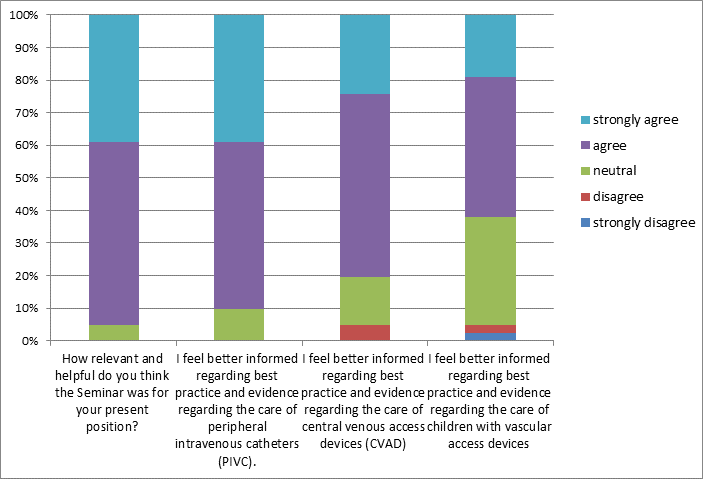Report from AVATAR state of the art in vascular access management seminar
)
On March 6 just under 100 dedicated clinicians joined us for the inaugural AVATAR State of the Art in Vascular Access Management seminar, held at Rydges Parramatta.
They were a mixed bunch with vascular access clinicians being the largest group (32%), followed by critical care (18%), inpatient services (11%), cancer services (10%) and infection prevention (9%), with the balance made up of several other speciality groups. This eclectic mix made for great conversations as participants were deliberately assigned to tables so that an exchange of perspectives could be achieved during group work.
Participants were treated to a great Program with presentations from leading Australian, and world, researchers and clinicians.
There were two key outcomes for the Seminar. First to present both the evidence and the art of vascular access care. With only a small number of exceptions participant feedback was highly positive (see chart below).

The second key outcome was for the clinicians from different speciality areas to develop a shared understanding of the challenges of achieving best practice. This was achieved through three group work sessions designed to identify the barriers and enablers of best practice; and key implementation strategies.
Over the course of the day participants soon grew to understand there were many shared challenges and importantly the energy in the room helped to reveal a number of successful implementation strategies.

The greatest challenge appeared to be communication especially with regard to transfers of care across the hospital and on to home. The next challenge was to ensure patients received their treatment by ensuring a systematic approach to choice and care of a vascular access device. Another significant challenge was achieving clinician competency, which was further compounded by a lack of standardised practices across facilities. Governance challenges included accurate documentation and organisational culture.
Videos from the seminar will be available soon.

We were also extremely lucky and thankful to our eight corporate sponsors (3M, Andiodynamics, Bard, BD - Becton Dickinson, BBraun, MSA - Medical Specialties Australasia, FloMedical, Teleflex) who enabled us to keep the registration price so low.
) Author:Kaye Rolls
Author:Kaye Rolls| Tags:AVATARcentral vascular access devicesdressingsintravenous catheterIV managementsecurementvascular access devices |









